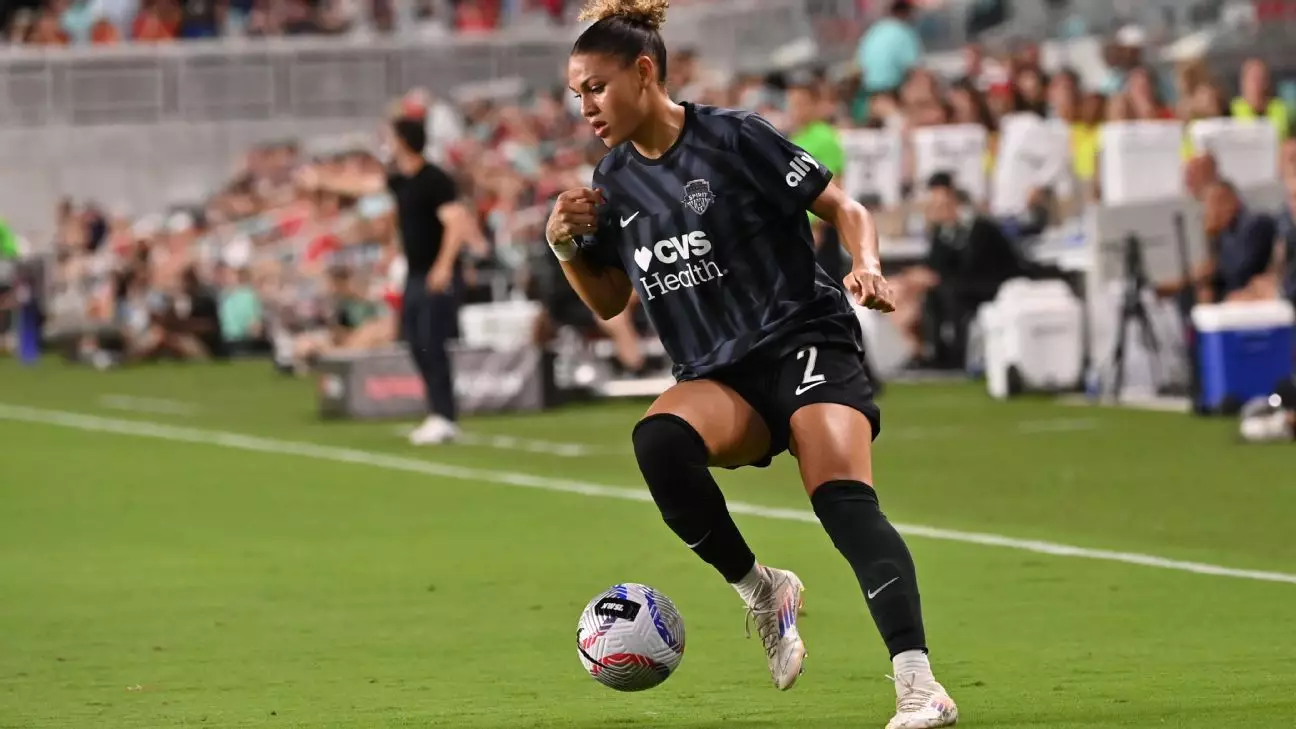The anticipation surrounding Trinity Rodman’s return to the United States Women’s National Team (USWNT) is palpable. After finding success at the Tokyo Olympics and contributing to the team’s historic victory, her absence from the international scene has been noticeable, particularly in light of the ongoing evolution within the squad. With Emma Hayes announcing Rodman’s inclusion among the 24 players set for the upcoming friendly matches against Brazil, the stage is set for a significant celebration—a reunion of sorts for the team that clinched Olympic gold less than a year ago.
Rodman’s journey back to form was fraught with challenges, primarily stemming from chronic back pain that limited her appearances and kept her from the last several training camps. After a prolonged period away from the national spotlight, her recent appearance with the Washington Spirit marked a pivotal moment. Though her return manifested in a 57th-minute entry that coincided with a difficult 2-0 loss against the Kansas City Current, it showcased her resilience and passion for the game. The near-goal that was ultimately disallowed due to a video review only underscores the unpredictability of sports.
The USWNT: A New Wave of Talent
As the USWNT prepares to face Brazil, the composition of the team has undeniably changed. Coach Emma Hayes is concurrently fostering a fresh wave of talent, blending seasoned players with promising newcomers—an exciting prospect for the future of women’s soccer in the United States. Among the young talents, 17-year-old Lily Yohannes has already begun to make a name for herself following a commendable performance at the SheBelieves Cup. This dual dynamic of experience and youth is crucial, offering players the chance to learn and grow within the ranks of a team renowned for its success.
The roster’s average age of 25.3 years reflects a strategic shift, with emphasis on nurturing “less experienced players.” Hayes’ philosophy that “every player must earn their spot” suggests a competitive atmosphere, ripe with opportunity. The lean toward young talent can be perceived as risky, but it also invigorates the team. More cap-less players means more fresh perspectives on the field, eliciting the potential for innovative strategies that could redefine the team’s playstyle.
Women’s Soccer in Transition
The timing of these matches against Brazil cannot be overstated. This rematch is not just about rekindling national pride after last year’s Olympic final victory; it serves as a litmus test for the direction in which the team is heading. The absences of renowned stars like Sophia Smith and Mallory Swanson, who are navigating personal transitions, open the floor for lesser-known players to potentially rise to the occasion. Both players have long been cornerstones of the USWNT, yet their current situations—maternity and personal leave—highlight the undeniable reality that the sport is evolving, with life outside soccer necessitating a recalibration.
As Hayes incorporates players who haven’t had opportunity under her guidance until now, like Alana Cook and Ashley Hatch, the coaching staff’s adaptability will also be put to the test. It’s a dual challenge of honoring the legacy of accomplished players while forging a new path forward. With future World Cups looming large on the horizon, every match becomes a crucial building block for the USWNT to refine its identity.
Looking Ahead: The Quest for Consistency
The convergence of the established and the emerging will not solely hinge on individual performance but on the collaborative spirit that produces consistency at the elite level. Rodman embodies this pursuit—as a player who has fought through adversity and returned to the national stage, she inspires teammates to strive for a similar commitment. As Hayes notes, the coaching process involves “working with players who are striving for consistency,” signaling that maintaining high performance will be a continual focus.
For fans and analysts alike, the upcoming matches will serve not only as a backdrop for evaluating Rodman and her teammates but also as pivotal moments for cementing a team culture that prioritizes growth, tenacity, and excellence. It isn’t just about a game score; it’s about shaping the future of women’s soccer in the U.S.—a future that, with hope and determination, looks brighter than ever.

